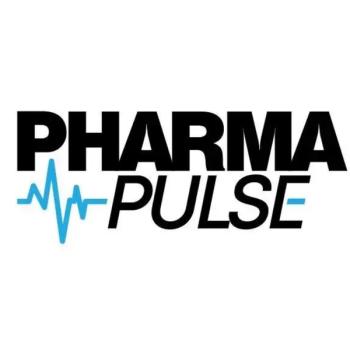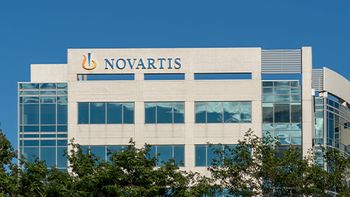
- Pharmaceutical Commerce - September 2018
- Volume 13
- Issue 3
The 2018 Pharma Cold Chain: more data leads to less risk
Pharma supply chain managers now have options for dealing with cryogenic to room-temperature ranges
Pharma manufacturers have been able to deliver refrigerated products to patients almost since the time when mechanical refrigeration was invented—the
- The most worry-free form of long-distance (international) shipping remains air freight and the active (powered) unit load devices (ULDs). As the most expensive form of high-volume delivery, supply chain managers are continually evaluating new containers and alternative modes of transport like ocean shipping.
- Airports, air carriers and many third-party logistics providers (3PLs) have substantially upgraded and expanded their refrigeration storage capacity, so much so that shipments can depend more on moving from one temperature-controlled storage facility to another in the supply chain, rather than express deliveries from the manufacturer to a dispensing endpoint.
- Reuse of parcel and pallet shipping containers is more of a reality today, meeting some of the sustainability goals of manufacturers that have been talked about for years. At the same time, the reuse “loop” is transforming the business of temperature-sensitive packaging from the purchase of single-use packaging, to the pay-per-use rental or leasing model.
- Innovation continues both at the “upper end” of temperature-controlled shipping—managing controlled room-temperature products in the 5-30°C regime—and at the “lower end” of temperature-controlled shipping—cryogenic containers and delivery services for the introduction of cellular and genetic therapies (CGTs) to the market.
- More attention is being paid to the front end of the biopharma supply chain—laboratories and manufacturing facilities—and the back end or last mile—including delivery of individual dosages to patients’ homes.
- CGTs, in that some of them involve the patient’s own cells being extracted, transported to a pharma facility and manipulated, then returned to the patient for infusion, represents both the crowning achievement of personalized medicine, and a radically different supply chain. Commercial delivery to patients is very similar to clinical trial logistics, and in fact, the clinical trial logistics leaders are moving aggressively into managing this on behalf of pharma clients.
- Finally, data—of the shipment’s condition in transit, and of the overall logistics process—is becoming a more sought-after element of supply chain management. Geolocation of the shipment is a reality; the “internet of things” (IoT) philosophy is taking hold via smart devices that automatically report their status in real time. At the farther ends of the digitization, developers are looking at applying blockchain technology to the cold chain.
Standards and regs
Perhaps the broadest-based change going on in the pharma cold chain is the adoption of the CEIV Pharma certification, which now has nearly 300 organizations globally involved in renewing or receiving this designation. The Center of Excellence for Independent Validators – Pharma is an effort undertaken by the International Air Transport Assn. (IATA) to standardize (to the degree possible) global practices for any shipment or trade lane that involves air freight. But it goes well beyond air carriers: airport ground handling providers; warehouses that store pharma products for delivery to an airport; trucking companies that make such transfers into and out of airports; and freight forwarders and 3PLs that manage pharma shipments are all within scope. Arguably, the only parts of global logistics that don’t fit are seaports, and ground carriers that never deliver to an airport.
“A chain is only as strong as its weakest link,” notes Andrea Gruber, head of special cargo at IATA, under which the CEIV Pharma program operates. Besides getting many other logistics players involved beyond air carriers (who are the only formal members of IATA), the effort’s focus is to “harmonize practices and requirements to a uniform level globally, thus providing assurance to the pharma industry.”
IATA started the CEIV Pharma program in 2014 in part for clearly competitive reasons: it didn’t want to lose market share relative to ground and ocean transportation. IATA has some standards that, in effect, have force of law (such as regulations for cargo container construction), but CEIV Pharma is voluntary. Certification can be provided for an individual business (and by location); for a “community” (an international airport and its associated service providers) or a “coalition” (a regional grouping of airports, facilities and providers).
CEIV certification involves a two-step audit by IATA-approved (but independent) validators, who bring a 300-item list of criteria; the full program can take as long as six months and usually involves training personnel in addition to reviewing facilities and procedures. There are 10 validators currently; one company that touts the approved auditors within its staff is 4advice, based in Mechelen, the Netherlands.
Although the goal is global harmonization, IATA’s Gruber concedes that there will be national variations in practices; Saudi Arabia, for example, requires all refrigerated pharma deliveries to be temperature-monitored, something that is recommended but not required elsewhere. The main standards involved are the EU Good Distribution Practices (GDP) document, in place since 2013, and World Health Organization requirements; national standards are followed where applicable.
The list of organizations with CEIV Pharma validation is long. Some highlights: Kuehne + Nagel validated its entire air-freight network (86 locations) in 2017; DHL has validated nearly all of its North American operations; and the airports of Brussels, Miami, Singapore, Sharjah (Saudi Arabia) have community validation. Delta Air Cargo was the first US passenger-based airline to be validated, in 2017. But the program is not by any means universal; World Courier, a leading clinical trial logistics provider, opted for GDP certification (by a consulting firm called DQS) for its global network of offices early this year.
Meanwhile, standards-setting is not a done deal by any means. The US Pharmacopeia, which has a variety of standards relevant to cold chain logistics, issued a draft version of USP <1079> this summer, and is soliciting comments with a goal of finalizing the standard in early 2019. USP <1079> is being nearly totally rewritten; the new standard is focused primarily on setting up quality management systems to oversee logistics processes; it also refers to other USP standards for stability testing and packaging.
Standards will continue to evolve, just as industry practices have. “The industry has studied temperature and humidity and how it affects medicines for many years,” notes Rafik Bishara, a leading voice in pharma cold chain practices and member of USP expert committees (see p. 14). “Now, with new therapies such as personalized, genetically engineered pharmaceuticals appearing, additional factors such as shock, drop, shake, vibration and pressure should be investigated.”
Traditionally, bulk air shipments have been in pallet-sized unit-load devices (ULDs) pioneered by Envirotainer, which introduced a powered version containing its own heating and cooling unit in the mid-2000s. CSafe, DoKaSch and a few others have similar units, and in most cases, they are leased or rented, for a set period of time or for individual trips. (Since the units rarely leave airplanes or airports, there’s little incentive for pharma companies to have their own stock of the units.)
operating conditions. Credit: Pelican" alignment="right"/>
The world of parcel containers, whether for air or ground transportation, has been a different matter. There, the boxes are inexpensive (relative to the value of the pharma products they are protecting); and most of the materials (cardboard, foamed-plastic insulation, gel packs) are disposed after a single use.
Two factors are changing this traditional dynamic: one, client companies are calling on packaging suppliers to provide a more integrated service, starting with the design and specs of the container, preconditioning to deliver them at an appropriate temperature, and helping manage the logistics processes and data collection. Second, risk-based analysis of higher-value pharma products calls for employing higher-quality containers, such as using vacuum insulated panels instead of expanded polystyrene, or advanced phase-change materials (PCMs) in gel packs. Together, these factors make a reuse program based on renting or leasing the containers, rather than a single-use purchase, more feasible.
“We are promoting the concept of ‘cold chain as a service,’” says Jay McHarg, CEO of AeroSafe Global. “Clients should tell us what level of service they need, and we provide the appropriate container, manage its reverse logistics, and handle the client’s variations in container inventory.” Pharma companies should not, in his opinion, devote substantial warehouse space to storing and prepping containers; by working with AeroSafe’s network of locations and service partners, these issues can be taken off the table.
AeroSafe is best known for its vacuum panels based on a proprietary form of open-cell, carbon-based aerogels, but it now offers a more economical line of EPS containers as well.
“Our pay-per-use reuse program is the fastest-growing part of our business,” says Ron Haub, commercial director of Sonoco ThermoSafe, the leading pharma cold-chain packaging vendor. “In the past, this was viewed as something of a fad for ‘greenness’, but now the growth of high-value products that require reliable temperature control, plus the cost advantages that are available when a container can be reused multiple times are making it a reality.” Haub says that the success of the program for a client depends on a well-characterized trade lane including reverse-logistics capabilities (to improve the probability of getting the box back), and accurately understanding the environmental conditions of the lane. Vishal Khushalani, global business development and marketing manager at Sonoco ThermoSafe, notes that his company is unusual in that it offers both bulk containers (pallet shippers) and parcels, in five distinct insulation materials ranging from EPS to vacuum panels. These degrees of freedom enable the company to dial in the appropriate packaging materials and designs, while evaluating the economics of reuse. “Reuse isn’t going to work in all instances,” he says, “we want to be proactive to provide options to clients.”
“Reuse/rental systems are another example of pharma companies getting back to core competencies—which is not packaging operations, asset management or logistics,” notes Jamie Chasteen, sr. product manager at Cold Chain Technologies (CCT). “We do conditioning and setup of shipping systems, both parcel and pallet, from our facilities, show up at your door, your product is placed inside, and the container goes right out the door.” CCT has facilities in the US, Latin America, and SE Asia as well as a longstanding partnership with Topa Thermal Packaging in the Netherlands for a European footprint facilitating reuse.
Pelican Biothermal, another provider of a range of containers and materials, is investing heavily in its reuse program. “We started the year with around 20 locations that could accept our containers after use,” says Adam Tetz, director of worldwide marketing. “By the end of this year, we will have 100 around the world. Our clients ship globally, so we have to be a global provider.” Tetz says that a rental or leasing program reduces the worries of clients whose shipment volumes vary from month to month, besides reducing the complexity caused by preconditioning, container packout, and managing the logistics of the out- and return-trips.
While the reuse programs are most suited to high-performance packaging solutions, providers of conventional parcels (EPS insulation plus a gel pack) have not been standing still. EFP, marketers of the PharmaTuff brand of EPS containers, has done two things to address the market, according to Keith Arentz, EFP president: It is building out a network of other shaped-plastic foam manufacturers to provide national coverage; and it is actively promoting the recycling of EPS through membership in the EPS-Industry Alliance, a network of foam processors that accept used material for recycling. EPS recycling remains a challenge (among other things, EPS is 98% air—a tough material to transport economically), but EPS manufacturers note that the volume of EPS in all applications continues to rise, so the industry needs to continue developing a recycling pathway.
Active vs. passive
The reuse model, having been developed for bulk, air shipments employing ULDs, is now being used against those ULDs by vendors of passive shipping systems. This active vs. passive debate has been going on for years in the industry; on the one hand, active systems offer the best assurance of keeping a shipment within its temperature limits, but at higher cost; on the other, passive systems provide economical air-freight rates while, say their proponents, offering temperature control as reliably as the active systems.
“Active and passive systems will both have a place in the industry going forward,” says Sonoco ThermoSafe’s Haub. “The deciding factor will be how to take risk out of the equation—what is the best solution for a given trade lane.”
Envirotainer, known for its active systems announced earlier this year that it now has over 1,000 RKN (active units) in circulation around the world. (Envirotainer blurs the distinction between active and passive by claiming that its “t”-type units, which use dry ice rather than a powered refrigerator, are still an “active” system.) CSafe, a competitor, has just come out with a RAP-designated active unit (“RAP” is airline-code lingo for size and refrigerative capability), that can carry four US-size pallets or five Euro-size, to compete with the RAP-e2 unit Envirotainer has had on the market for several years.
Meanwhile, passive systems vendors have been upping their game for several years now, overcoming the relatively poor reputation they had when first offering pallet-size air-freight containers. Pelican Biothermal has just introduced its CoolPall Flex line (Fig. 2), featuring modularized components and variations on PCM configurations for both refrigerated (2-8°C) and CRT (15-25°C) shipping, and claiming in-spec performance under nominal operating conditions for up to 144 hours. Many other vendors have similar designs.
Sonoco ThermoSafe now straddles the active/passive debate, having acquired the PharmaPort technology two years ago, and is now re-introducing it to the market (Fig. 3). PharmaPort “uses a different active technology, involving eutectic plates, fans and compressors to maintain a constant +5°C temperature (“eutectic” material changes its physical orientation as it warms).
Another element playing into passive ís favor is that transportation providers, airports and air cargo companies have substantially expanded their temperature-controlled infrastructure around the world: shipments can now hopscotch from one reefer space to another; active containers can get a power recharge, and passive systems can stay within a designated temperature, and sometimes even have their PCM packs “recharged,” so to speak.
This PCM recharging takes a more sophisticated knowledge of thermodynamics, says CCT’s Chasteen. “Some vendors claim that by having their PCM system in refrigerated storage, it is ‘hibernating’ and stopping the qualification clock,” he says. “But what is really necessary to accomplish this is to have a PCM whose freezing point is higher than the refrigerator. The industry’s standard 5°C PCM will not truly hibernate, rather it will lose some amount of ‘cold energy’ which reduces the remaining time the shipper has left.” For this reason, CCT has developed a proprietary family of gelled PCMs, including 3, 5, and 7°C versions. The 7°C PCM provides 2-8°C protection, allows for single step conditioning in refrigerators, and recharges during extended refrigerated storage while in transit.
The CRT scene
When the EU GDP standards were promulgated in 2013, there was considerable attention paid to the requirement that all pharmaceuticals—not just 2-8°C ones—be transported within the temperature specified on the product’s label. Result: controlled room-temperature products (essentially, the other 90%+ of pharmaceuticals that are not refrigerated) need temperature control, possibly including CRT packaging.
The first industry response to this has been to tighten up the data and procedures for determining the stability budget of a pharma product—how long it can be outside its label temperature and retain efficacy. Many products (especially oral solids) are relatively immune to temperature. But the situation creates ambiguity: some customs inspectors or health authorities are rigorous about the matter; others, less so.
The most direct way to address CRT temperature control is to adopt the same technology as refrigerated containers—insulated boxes with gel packs. The challenge here is that it can be more difficult to keep a product at room temperature (because of the mass of PCM material necessary) than a refrigerated product, whose PCM can pack more cooling into a given mass). Packaging vendors have also engineered two-component PCMs, to protect against both the upper end and the lower end of the temperature range (this can also turn into a winter packout for cold, and a summer packout for heat).
In many cases, determining the necessary protection is a combination of stability budget and the characteristics of the trade lane—it might be necessary only to protect against extreme heat (such as when product pallets are sitting on a runway tarmac); the rest of the time, more moderate temperatures can exist. This, in turn, is opening up the use of thermal blanketing—a wrap that encloses a pallet, and offers several hours of protection against temperature extremes. Q Products, a blanketing manufacturer, has marketed its products successfully in such applications, including wrapping pallets that go into ocean-borne reefer containers. The blanketing can protect product while the container is being loaded or unloaded; the reefer container provides protection during the transit. The forms of blanketing have multiplied, with some including fiberfill layers, bubble wrap, and aluminized films to turn away sunlight.
Cold Chain Technologies expects to make significant headway in this market with its KoolTemp GTS Enshield pallet blanket product, which incorporates its advanced PCM Gel. The gel, says Chasteen, is shape stableóthe PCM remains a flexible solid even at its thawed temperature, said to be the first of its kind. (If the PCM packet were cut open, he says, it would not leak fluid. Conventional PCM ìbricksî are often an open-cell plastic foam with PCM suffused within it and if breached PCM will leak.) The Enshield knits together multiple packets of the gel, thus providing the temperature-sustaining properties of PCMs in a blanket form. CCT has multiple versions intended for frozen, refrigerated, and CRT applications.
Cost savings is the big driver of blanketing. CCT claims a 50% savings when using its blankets, relative to a fully equipped shipping container, depending on the specifics of a shipping lane; other manufacturers note that the lighter weight, ease of application and reuse all combine to lower shipping costs, and thus making temperature control for CRT products, in particular, cost-effective.
Clinical trials; cellular therapies
Clinical trial logistics is its own sub-specialty where, because of how critical trial results are to a drug’s approval, essentially no cost is spared to ensure safe and effective delivery, to and from the trial site. Well-insulated containers, often transported via courier services, are common. The practices of PCI Pharmaceutical Services (which recently acquired Pharmaceutical Packaging Professionals, a Melbourne, Australia service provider, to expand its global reach) are an example: “PCI performs the tertiary packaging, but based on the needs of the study it is not necessarily done right after secondary packaging. Due to the fact that we hold material and ship on an as-needed basis to investigational sites, PCI chooses the optimal temperature-controlled shipping solution after considering the amount of material being shipped, the shipping lane, and environmental conditions during transit. Most often PCI will perform this packaging but in some special circumstances, PCI will use a third party specialty logistics carrier to bring a pre-charged active system for transit.”
Pharmaceutical Commerce’s Cold Chain Sourcebook estimates the 2017 clinical trial logistics market at $3.4 billion overall (with much of it requiring temperature-controlled services regardless of the compound being investigated). Within that, however, there is a boomlet around cellular and genetic therapies (CGTs) that involve the latest gene-editing techniques. The fact that many of these therapies are tied to a patient’s own cells (the ultimate in “personalized medicine”) puts a heavier burden on the logistics component of the process: the right cells have to be delivered, within narrow timespans.
“The challenge is that fresh cells, from and back to the patient, are best; this puts constraints on how the trials are performed, or how commercial therapy is carried out,” says Simon Ellison, CGT service director at World Courier. “Cryopreservation is often necessary for the processed cells, but it’s a balancing act to preserve as much cell viability as possible.”
Ellison, who notes that his company has been involved with CGT since 2005 and currently handles half of the growing number of trials around the world, says that the researchers are so focused in their early stages on finding a therapeutic pathway, they lose sight of the logistics obstacles in their way. “Many of the CGTs are targeted initially for rare diseases, and of necessity, finding patients with those diseases is often a global undertaking.”
The CGT field is already affecting logistics technology. Earlier, says Ellison, drug developers didn’t realize that some conventional laboratory dewars (which are used for cryogenic storage) didn’t fit or couldn’t be used for air freight. World Courier has now partnered with two of the firms offering tailored solutions: Savsu (Fig. 1) and Cryoport. Evidence of how the CGT boomlet is benefiting logistics service providers can also be seen at BioLife Solutions, which manufactures cryopreservation fluids used in both clinical and commercial development: the company saw a doubling of revenue in Q2 2018 over the year before, and then garnered a $20-million capital investment from a private equity firm. (BioLife is part owner of Savsu.)
Bring me the data
While all these materials and process innovations are occurring, the most dynamic part of cold chain logistics is data collection. Data has long been a part of the process, to ensure that standards are being met, but increasingly, data are being used to rationalize the entire logistics process. An example of this is seen with Sonoco ThermoSafe’s PharmaPort 360, which features FAA-approved communications that include geolocation along with internal and external environmental conditions, as well as status checks of the container’s components. “Aside from the temperature control technology, we have clients that are as interested in the data gathering capabilities of PharmaPort,” says Sonoco’s Khushalani. The GPS capability means that the shipment can be tracked in real time (at least, while a plane is on the ground, since in-flight communications are forbidden by air regs); when matched with the temperature data, a more complete picture of a transit is created. The equipment status capability is of value to DHL Global Forwarding, which is partnering with Sonoco ThermoSafe in providing the service. “Getting equipment status enables us to anticipate potential problems, rather than simply reacted to what has occurred,” says Dave Bang, global head of temperature management solutions at DHL.
“If you’re collecting internal condition data only, that is for compliance,” says AeroSafe’s McHarg. “With external data and location, now you’re not just checking on the status of a box; you’re evaluating your entire supply chain.”
Bringing all the data together is an example of the “internet of things” (IoT) approach, with multiple sensors providing information and intelligence. But, as IoT advocates are finding in other industries, getting all the data from multiple supply chain participants is not straightforward. One potential solution to this is adopting blockchain technology, wherein various parties would share information on purpose-built network. This is the subject of study at the Center for Supply Chain Studies, which has 20-odd organizations participating in a proof-of-concept. At least one cold-chain equipment vendor, SkyCell, says that it has already built a blockchain network to provide clients data access with its pallet-scale shipping containers.
Ultimately, manufacturers will have to decide how much control and oversight they want to exert on their logistics services and equipment providers, and how much they want to leave in the hands of their providers. Robert Coyle, recently appointed SVP for planning and strategy at Kuehne + Nagel, says that it is striving to be the trusted advisor to its pharma clients, handling not only shipments but also contracted logistics services (including being a 4PL, or manager of various 3PLs serving global pharma). “We want to be the critical glue bringing data to provide an integrated, end-to-end supply chain,” he says.
Articles in this issue
over 7 years ago
Gimme my dataover 7 years ago
Cold Chain Suppliers Spotlight Directoryover 7 years ago
A Conversation with Rafik Bisharaover 7 years ago
Biopharma cold-chain market forecastNewsletter
Stay ahead in the life sciences industry with Pharmaceutical Commerce, the latest news, trends, and strategies in drug distribution, commercialization, and market access.




